This is a special card in that was very kindly donated to me with the understanding that I blog any repair attempt. As such, I will try to investigate the card as best as I can.
Seller Note “
I have owned the card since new, It was running at stock speeds for normal gaming use, No mining or overclocking, and no bios modifications.
It has never been repaired previously, Nor even attempted to repair it. No toaster oven reflows.
Thermal paste has been changed and the heatsink cleaned on a yearly basis.
This card was a great performer up until around a month ago when it started to hard lock the pc while gaming.
Playing youtube videos or using windows works fine.
Trying any game or benchmark will cause an instant hard lock.
Drivers have been reinstalled.
Occasional artifacting on start-up screen
I wish you luck in your efforts! And thank you for sharing your work with the wider community! I found your blog searching for gtx 780 repairs 🙂
“
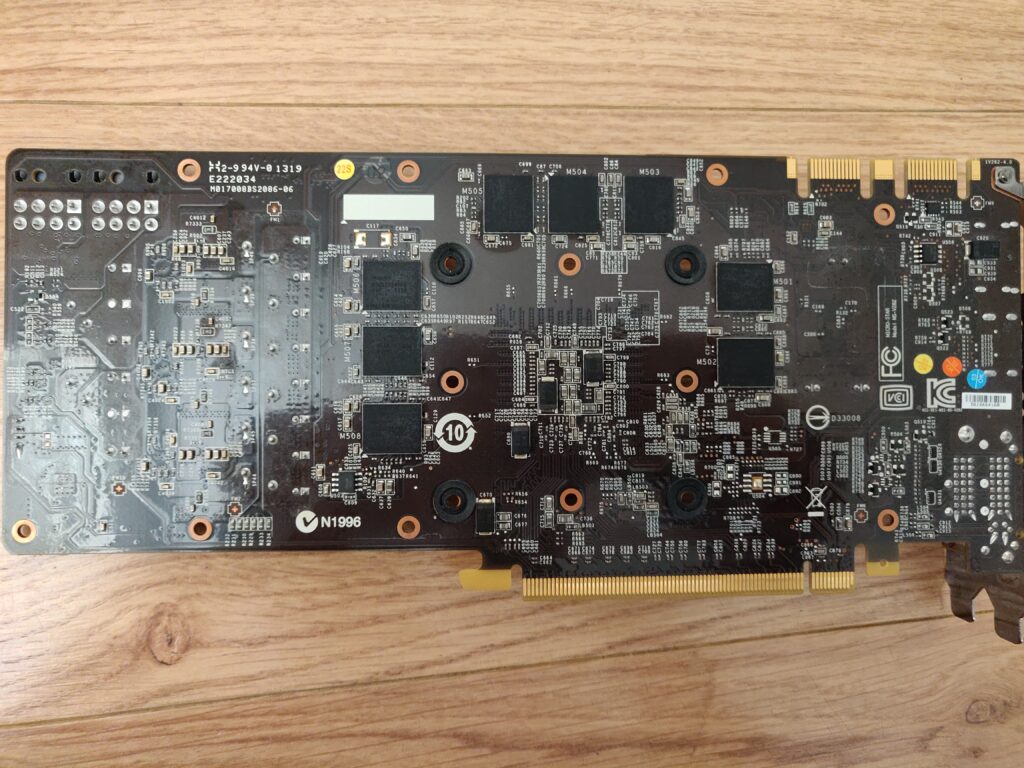
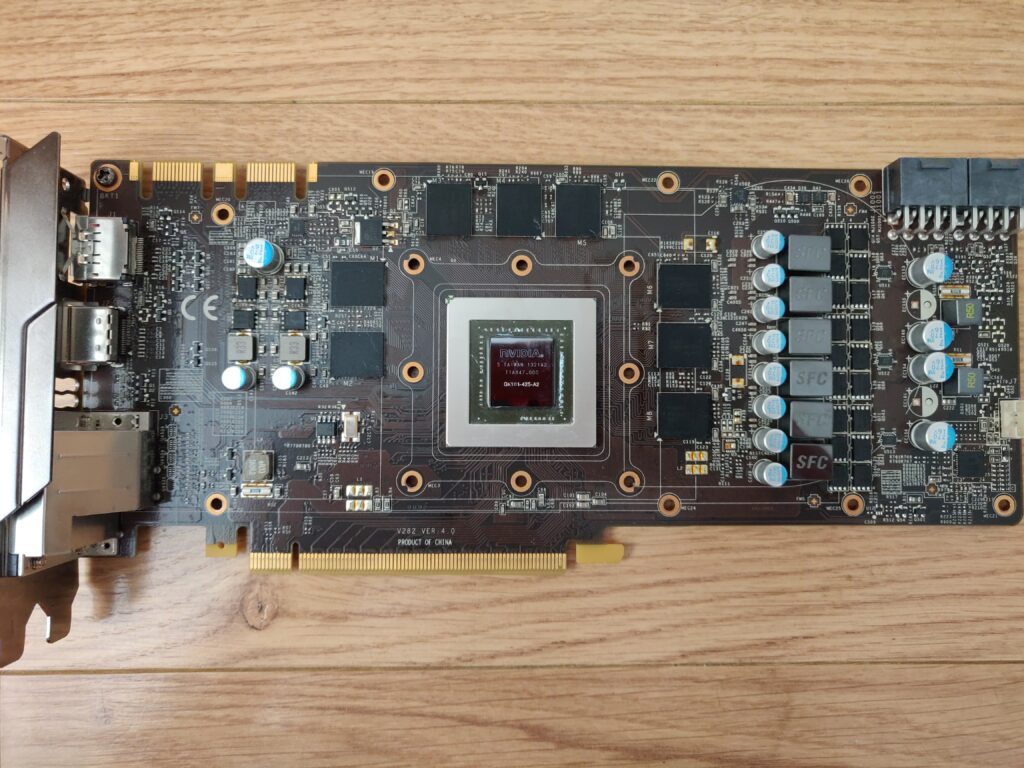
Summary
- It’s this one http://EVGA GTX 780 SC w/ ACX Cooler 6 GB, I am excited to look at this card because it is the special 6Gb edition and I don’t see them very often.
- Resistances
- VCore – 3.3Ω
- VMem – 11.9Ω (This strikes me as pretty low for a 7 series card, it is Samsung K4G41325FC-HC03, which can be low, but still seems suspiciously low)
- PEX – 271.3Ω
- 5V – 10KΩ+
- 3V – 835Ω
- 12V – 10KΩ+ all connectors
- Some corrosion was noticed on the back of the card, this ‘could’ lead to partial shorts and sporadic issues.
- With a vertical mount, passed MATS tests 10, 25 and 50Mb
Investigating the VRAM
Let’s start by taking a look at the special VRAM setup of this card.
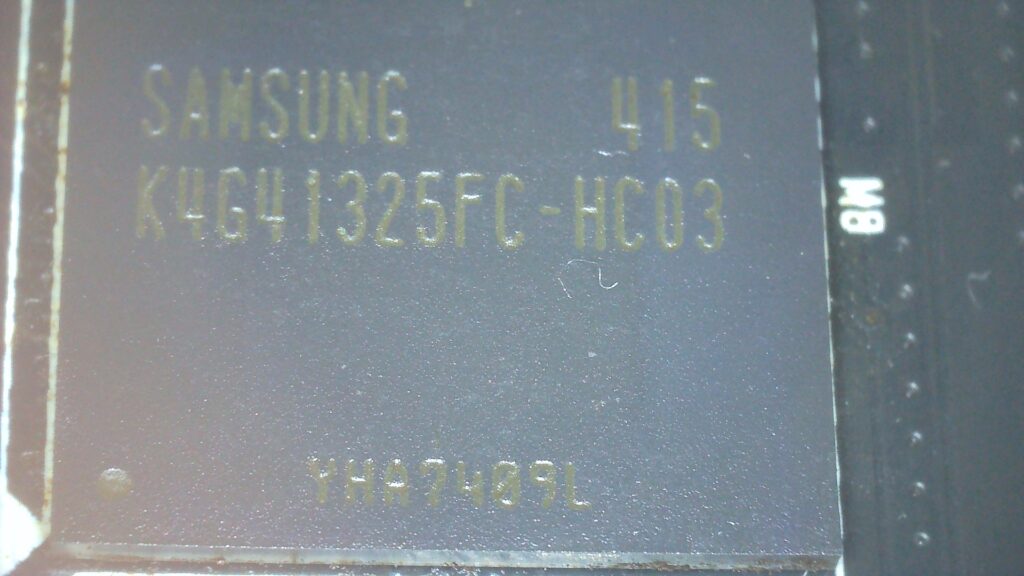
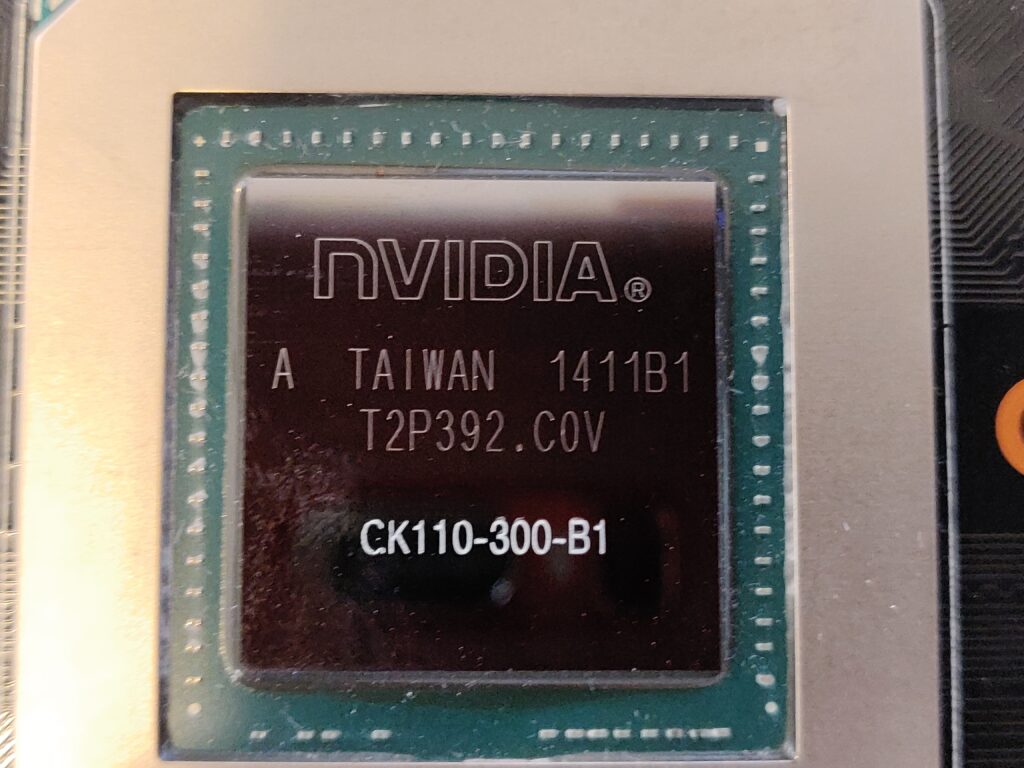
K4G41325FC-HC03 https://www.datasheet.directory/pdfviewer?url=https%3A%2F%2Fdatasheet.iiic.cc%2Fdatasheets-0%2Fsamsung%2FK4G41325FC-HC03.pdf
So, despite that low VMem resistance, MATS 367 seems happy with it (10Mb, 25Mb and 50Mb), this was from cold and in a vertical mount. Possibly with heat and flex, there could be more sporadic issues?
I also noticed corrosion on the back of the card, I have another partially fixed 780 like this EVGA GTX 780 3Gb (Card A). At first, it suffered intermittent detection and was detected reliably after a thorough clean of the corrosion.
Tackling the corrosion
Now that I have had a closer look, the corrosion is really quite serious and probably warrants the replacement of some components. I don’t want to stress the card in this condition in an effort to reproduce the reported lockups, even though the owner probably would have done. There is always the chance of random damage from shorts where corrosion is involved.
In particular, there is corrosion around the VMem VRM components:
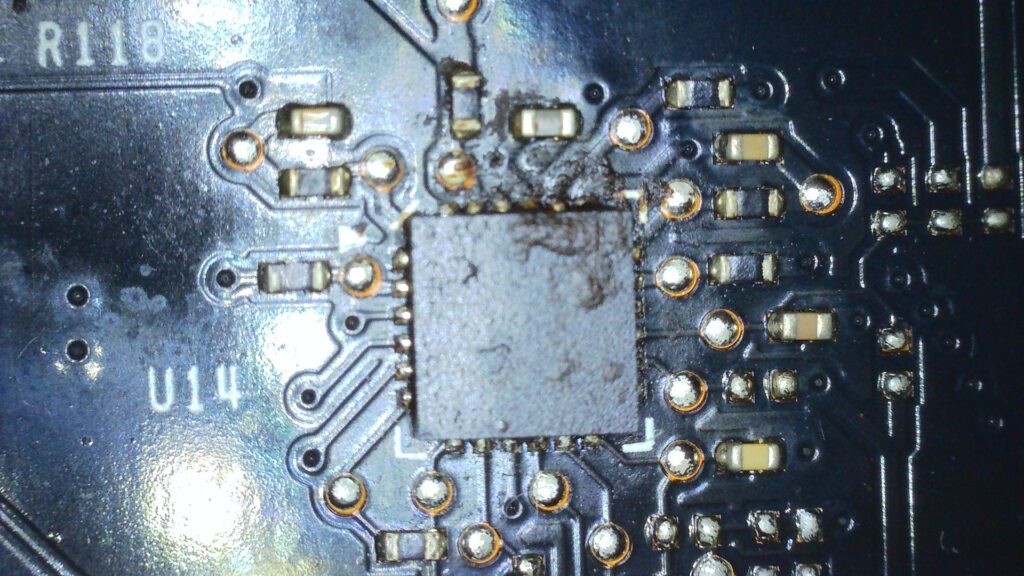
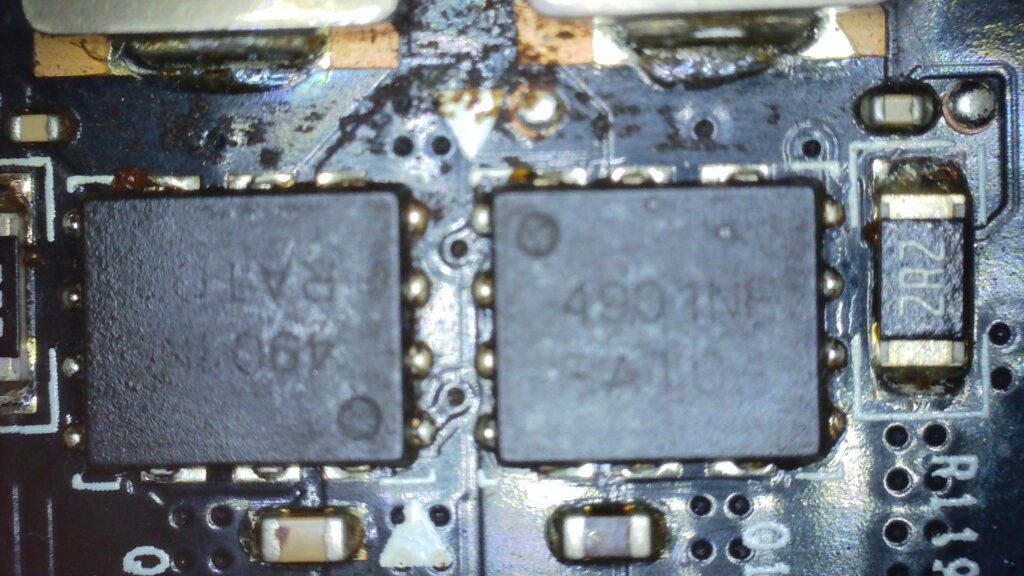
In a lucky case resolving some or all of the corroded areas ‘might’ help raise that low VMem resistance. After some work with some WD-40 Contact Cleaner and cotton buds, looking better:
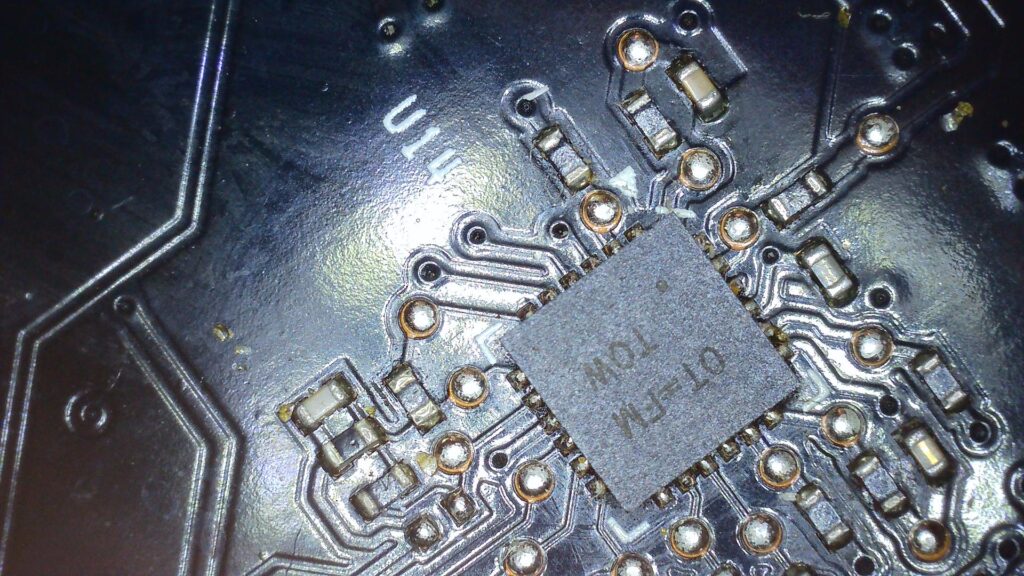
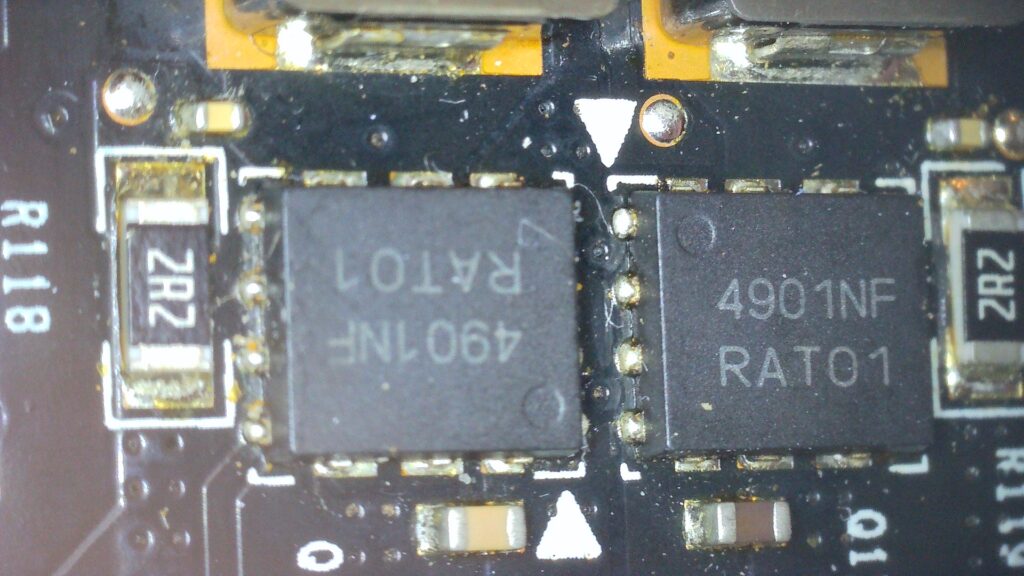
The resistance has only risen very slightly to 13.5Ω after, probably just variance.
I have also cleaned up the VCore VRM, which was also quite bad. The front of the card seems pretty clean now. Onto the back:
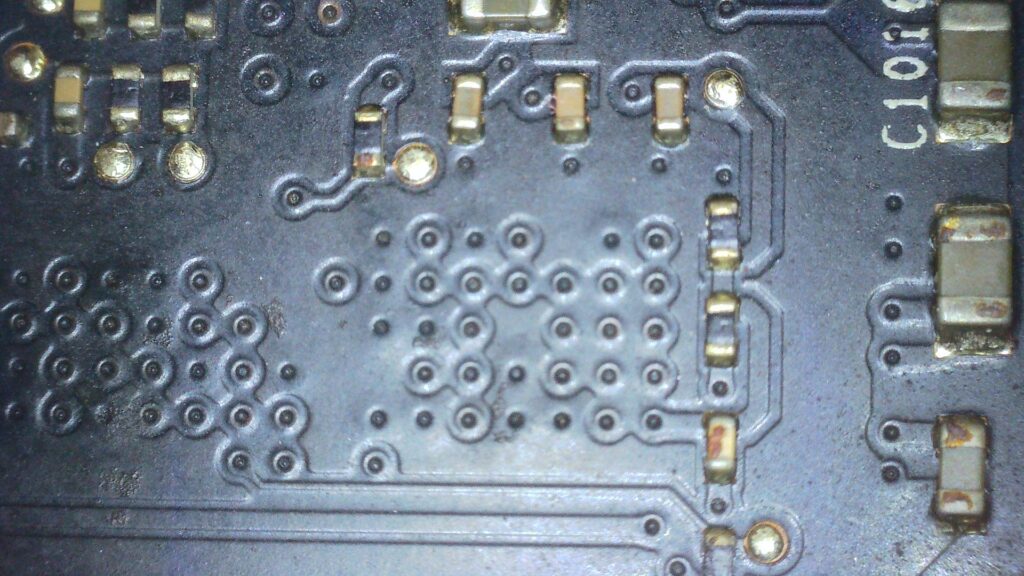
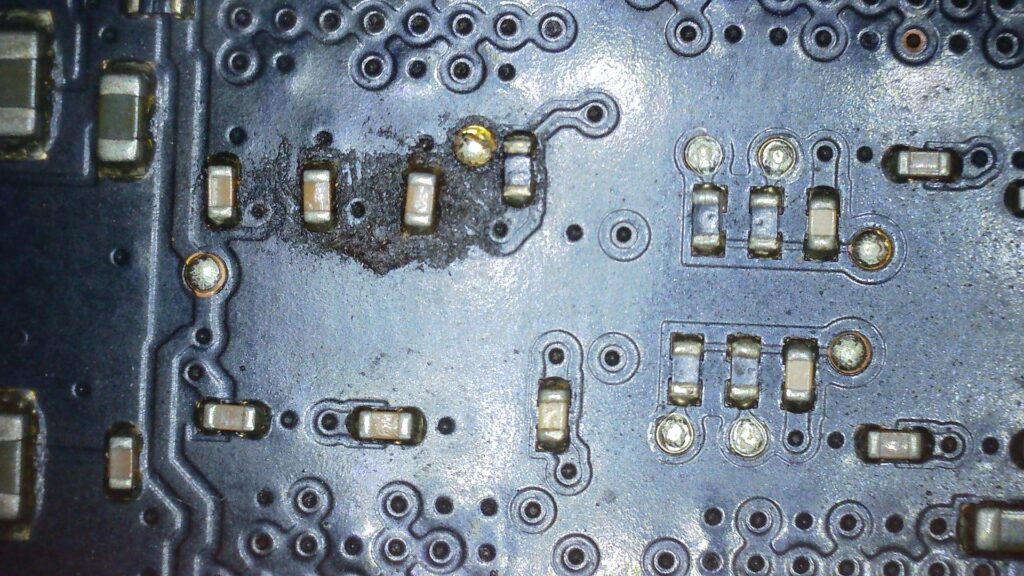

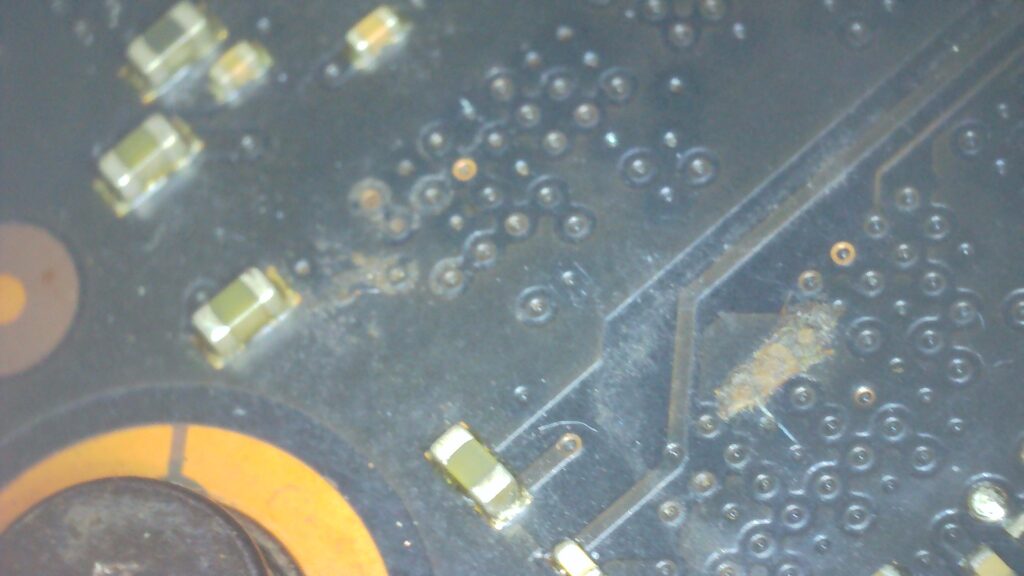
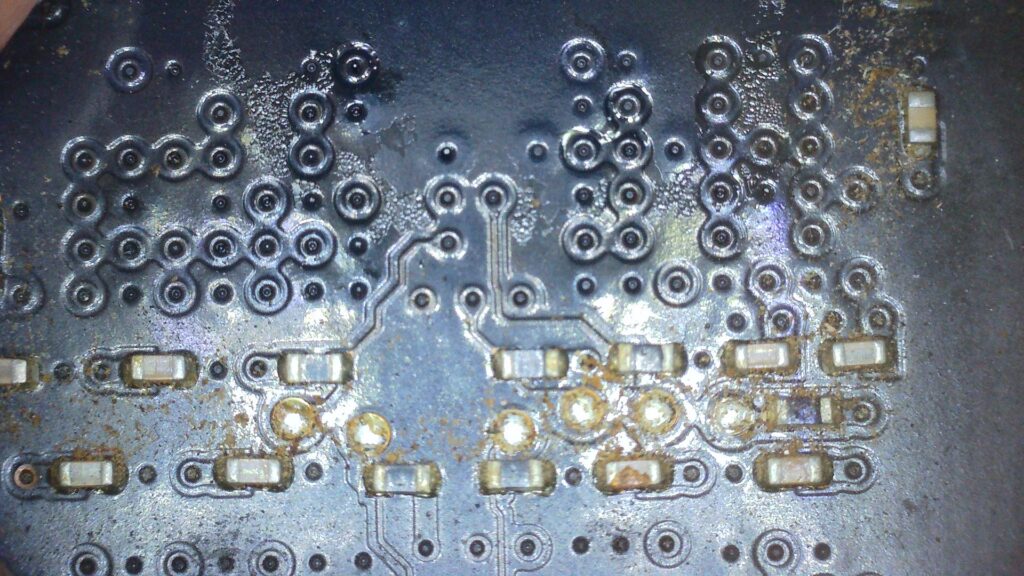
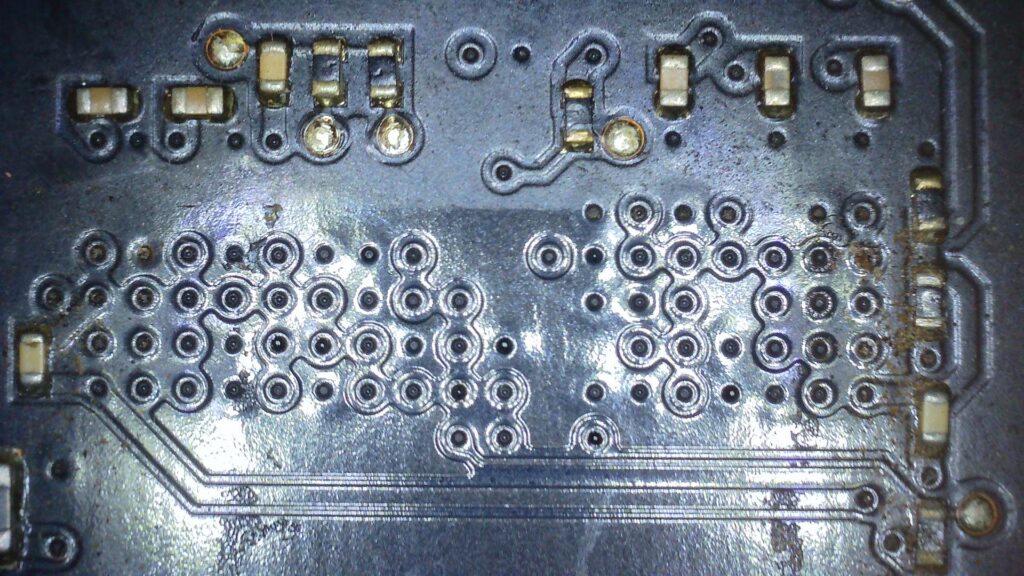
After cleaning the bad, there is no miracle improvement in VRAM resistance, but hopefully still good to clean it up.
Is there actually a partial short? Does anything get hot?
The thing is, 13.5Ω is nowhere near a dead short. In these cases, I find it’s more likely a IC (e.g. VRAM chip or MOSFET) that has an issue than a capacitor.
So, let’s have a quick check with the thermal camera:
- Running in the BIOS screen, nothing that strange, perhaps one of the VRAM VRMs appeared a bit warmer, but hard to say. Perhaps in a run state (drivers loaded) something would show more.
- Injecting 0.9V into to VRAM VRM draws 1 Amp, but nothing really shows.
Testing in windows
OK, definite problems here:
- Since the driver loaded, the PC is starting to lag.
- The screen cuts out sometimes.
Eventually, it crashes with strange artefacts shown below:
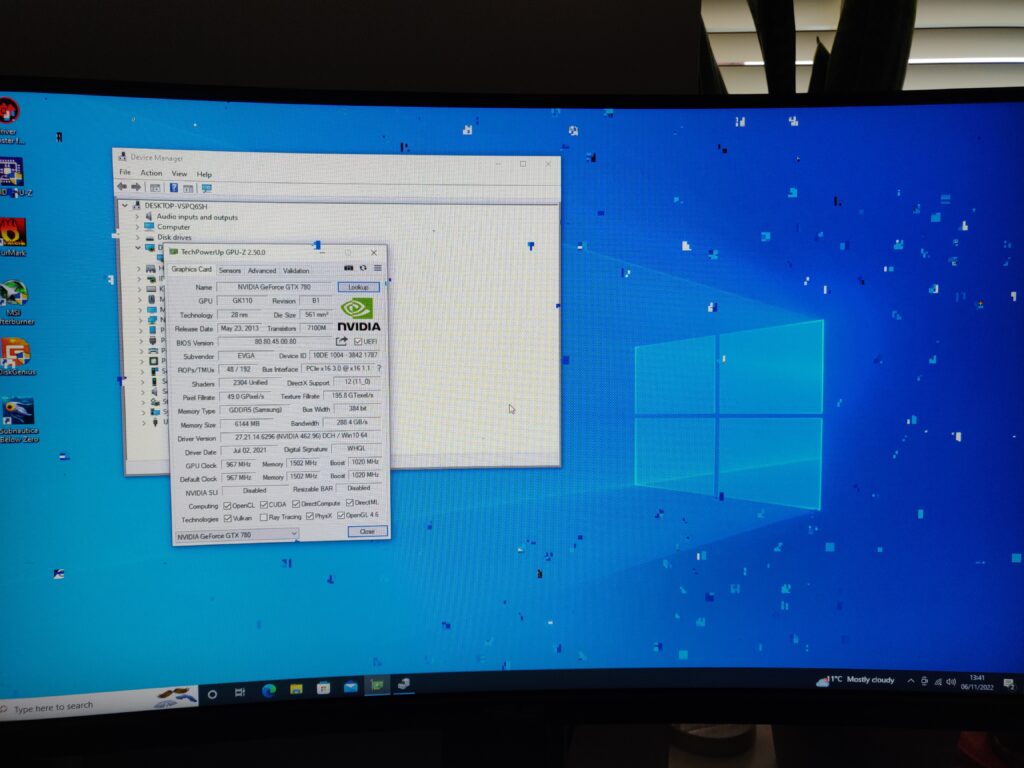
It’s just a guess, but looking that those artefacts and the behaviour, I would be concerned that the memory controller or core is the source of the low resistance.
The card will run as a second card (integrated graphics as primary). However, any attempt to load the card will result in it crashing. The below GPU-Z stats show what happens when the GPU-Z render test is run:

Next steps:
- It would be nice to know if the VMem resistance is indeed very low, assuming I can get a measurement from an identical working version. Realistically I would expect the VMem resistance to be perhaps 90Ω+
- I should run MODS for good measure, but suspect a core issue. The chances of a simple VRAM-related issue seem slim now.
- Removing the core to see if the VMem resistance rises is likely the next step. However, I still need to practice this.
- The prices of GTX 780s these days mean that I could probably procure another GTX 780 board and rather than fixing it, use it as a donor to fix this more special one.
Thank you for trying to fix this card. The corrosion is really bad and cant say i noticed it, The card was used in a games room pc.
Regardless of the result Thanks from me and anyone else who finds this information useful.
Hi Paul, you’re most welcome, my pleasure. If I can think of something else to try to address the low Vmem resistance, I will try it before attempting to remove the core. I was considering buying an ultrasonic cleaner, as I was wondering if it’s possible some corrosion or other debris is under the core? The behaviour is unlike anything I’ve seen on a 7 series before, it’s like it tries to work, cut’s out and eventually fails. The fact that it seems stable without load (as a second card, not displaying) makes me think it most likely is a core issue though, as this doesn’t seem consistent with a short. Will think about it, whilst I practice core BGA techniques 🙂 – thanks again, Rupert